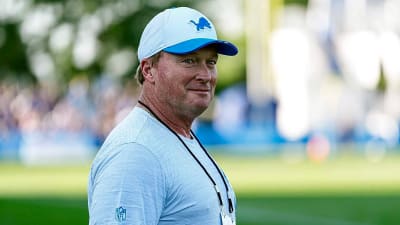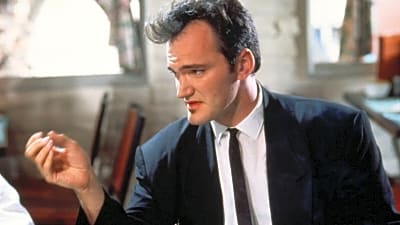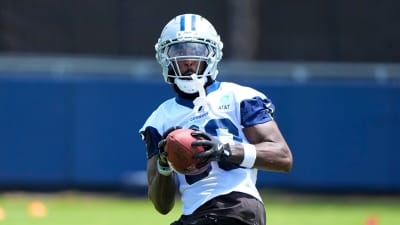
There were high expectations among Royals fans for rookie Jac Caglianone, the Kansas City Royals‘ first-round pick in the 2024 MLB Draft. When the Royals called him up in June, “Cags Mania” was at an all-time high, especially with the Kansas City offense scuffling to start the season.
Caglianone absolutely mashed MiLB pitching in his first full season as a professional, which explains the hype around his promotion.
In 66 games and 204 plate appearances between the Double-A Northwest Arkansas Naturals and Triple-A Omaha Storm Chasers, Caglianone slashed .337/.408/.617 with a 1.025 OPS. He also had 20 home runs, 72 RBI, a 0.54 BB/K ratio, and a 170 wRC+, according to FanGraphs. Safe to say, the former Florida product did everything possible to show that he had mastered minor league pitching.
Get ready, Kansas City!
— MLB Network (@MLBNetwork) June 2, 2025
MLB's No. 10 prospect Jac Caglianone has officially been called up to the @Royals Big League club pic.twitter.com/btIX0Heqlk
Unfortunately, the result from the Minor Leagues did not follow Cagalianone to the Major League level this season.
In 62 games and 232 plate appearances with the Royals, Caglianone slashed .157/.237/.295 with a .532 OPS. He had seven home runs, 18 RBI, a 0.35 BB/K ratio, and a 46 wRC+. Those were paltry numbers, even for a rookie in his first exposure to big league pitching.
Even though there was hope that Caglianone would be a key part of the Royals’ offense, especially as a right fielder (he replaced veteran Hunter Renfroe on the active roster in June), he was pretty much a non-factor in 2025. In fact, the Royals got more production from trade deadline pickup Mike Yastrzemski, who slashed .237/.339/.500 with an .839 OPS and nine home runs in 156 plate appearances with the Royals.
Thus, Caglianone’s outlook for 2026 may be a bit hazy, especially if the Royals decide to bring back Yastrzemski for 2026. While the playing time isn’t quite set yet for the talented Royals slugger, there were some positive things that he showed in 2025, as well as some areas that he needs to work on this offseason and in spring training.
Thus, let’s look at some of the good, the bad, and the ugly from Caglianone’s rookie campaign this past season.
The Good: Hard-Hit Rate and Bat Speed
There were plenty of issues with Caglianone at the plate in 2025. That said, his ability to hit the ball hard and generate elite bat speed wasn’t a concern in the slightest.
He produced a 12% barrel rate, which was 4.8% above league average, and a 42.4% hard-hit rate, which was 5.4% above league average. He had a bit of a lull in his hard-hit rate at the 80th batted-ball mark. However, he was able to correct that at the 95th batted-ball mark, and he finished the year strong with above-average hard-hit rates, according to his Savant rolling hard-hit rate chart.
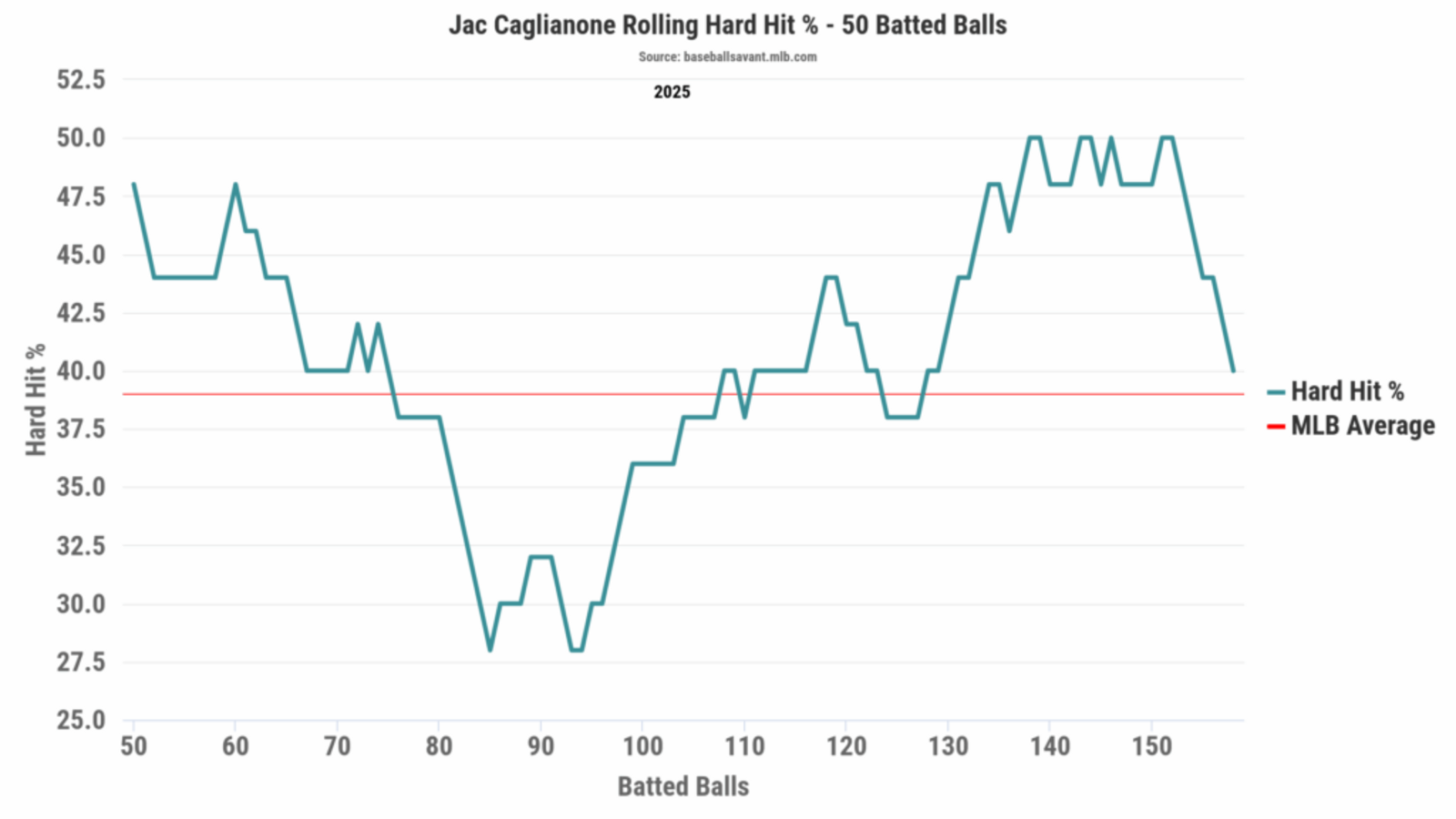
In terms of bat speed, there was no lull. His average bat speed was 77.3 MPH this year, with a fast-swing rate of 72.6% (the latter being 49% higher than the league average). According to his rolling bat speed chart via Savant, Caglianone remained above league average by a considerable margin for the entire duration of his season with the Royals.

While he didn’t get a lot of hits this year, his hits were of the productive variety, thanks to his natural power and bat speed. When looking at his spray chart this year, Caglianone showed that he has the potential not just to go yard, but also to hit the ball in the gaps for extra-base hits, especially in Kauffman Stadium’s spacious yard.
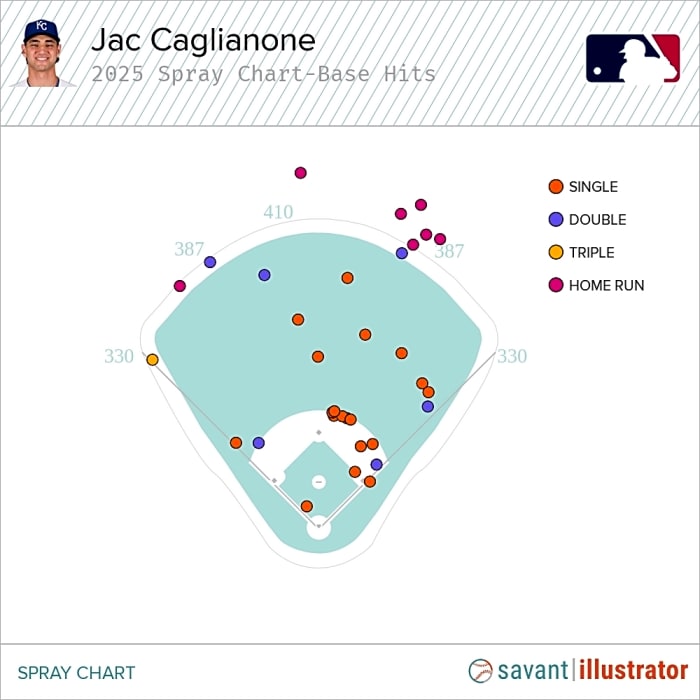
Caglianone’s stat line certainly was deflating. However, his natural tools and power were still on display in his small sample at the Major League level this season, which should give hope to Royals fans that Caglianone still has star potential.
The Bad: The Launch Angle
A primary issue with Caglianone in his MLB debut wasn’t his ability to hit the ball hard, but rather his inability to hit the ball in the air.
The 22-year-old had a groundball rate of 50.6%, which was 6.4% higher than the league average. Furthermore, his AIR%, which combines fly balls, line drives, and pop-ups, was 49.4%, 6.4% lower than the league average. He also had an average launch angle of 4.1 degrees, 8.3 degrees lower than average.
When looking at his launch angle trend this year, it was consistently below the league mark by a wide gap, not a good sign for a “power” hitter. He also showed a significant drop toward the end of the season after he returned from the IL in September.

His radial chart also illustrated his struggles with hitting the ball on the ground frequently. When he did launch and barrel the ball properly, he produced some efficient contact (which can be seen in the middle of the radial chart below). Unfortunately, that kind of contact didn’t happen enough.

Caglianone’s spray heatmap also showed a preponderance of balls not only hit on the ground, but pulled to the second base side. There weren’t enough batted balls in the outfield. That spray profile made Caglianone predictable for opposing infield defenses, and thus, he rolled into a lot of groundouts as a result of those shifts.
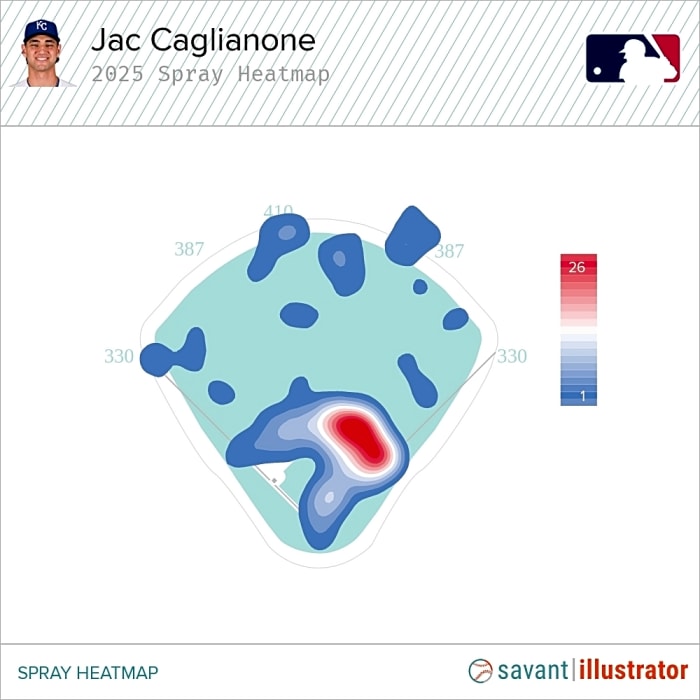
In the Royals’ end-of-the-year press conference on Tuesday, general manager JJ Picollo recognized Caglianone’s launch angle and groundball issues, and it seems like working on them will be a priority for the hitting development team this offseason.
Picollo: Will look to address Caglianone ground ball rate. “When he gets it in the air, good things happen”. A lot of it comes down to pitch selections
— Royals Review (@royalsreview) September 30, 2025
It will be interesting to see if the Royals can help Caglianone not only launch the ball better but also work on his pitch selection, which suppressed his power upside in his first season.
The Ugly: The Chases and Whiffs
Speaking of pitching selection, Caglianone’s lackluster plate decisions didn’t just result in a lot of groundballs. It also produced a lot of chases and whiffs.
Caglianone’s chase rate of 38.5% was 10.1% higher than the league average, and his 26.8% whiff rate was 1.8% higher than the league average. When it comes to chases, he swung at a high number of balls up and low and away, according to his swing zone chart.
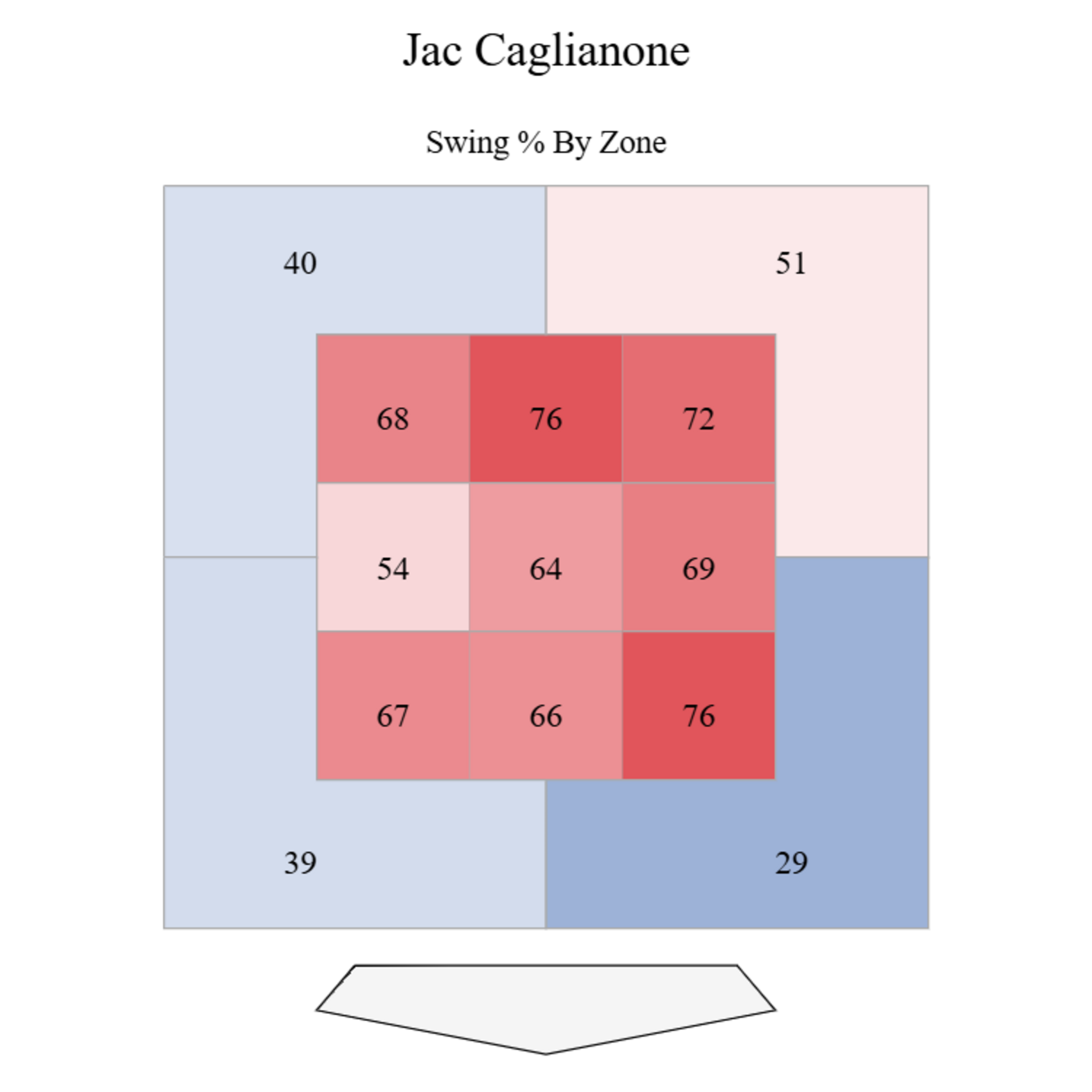
On pitches out of the zone, Caglianone had a 40% swing rate on pitches high and away, a 51% swing rate on pitches up, and a 39% swing rate on pitches low and away. While that doesn’t seem too bad at first glance, it looks worse when compared to his whiff zone chart.
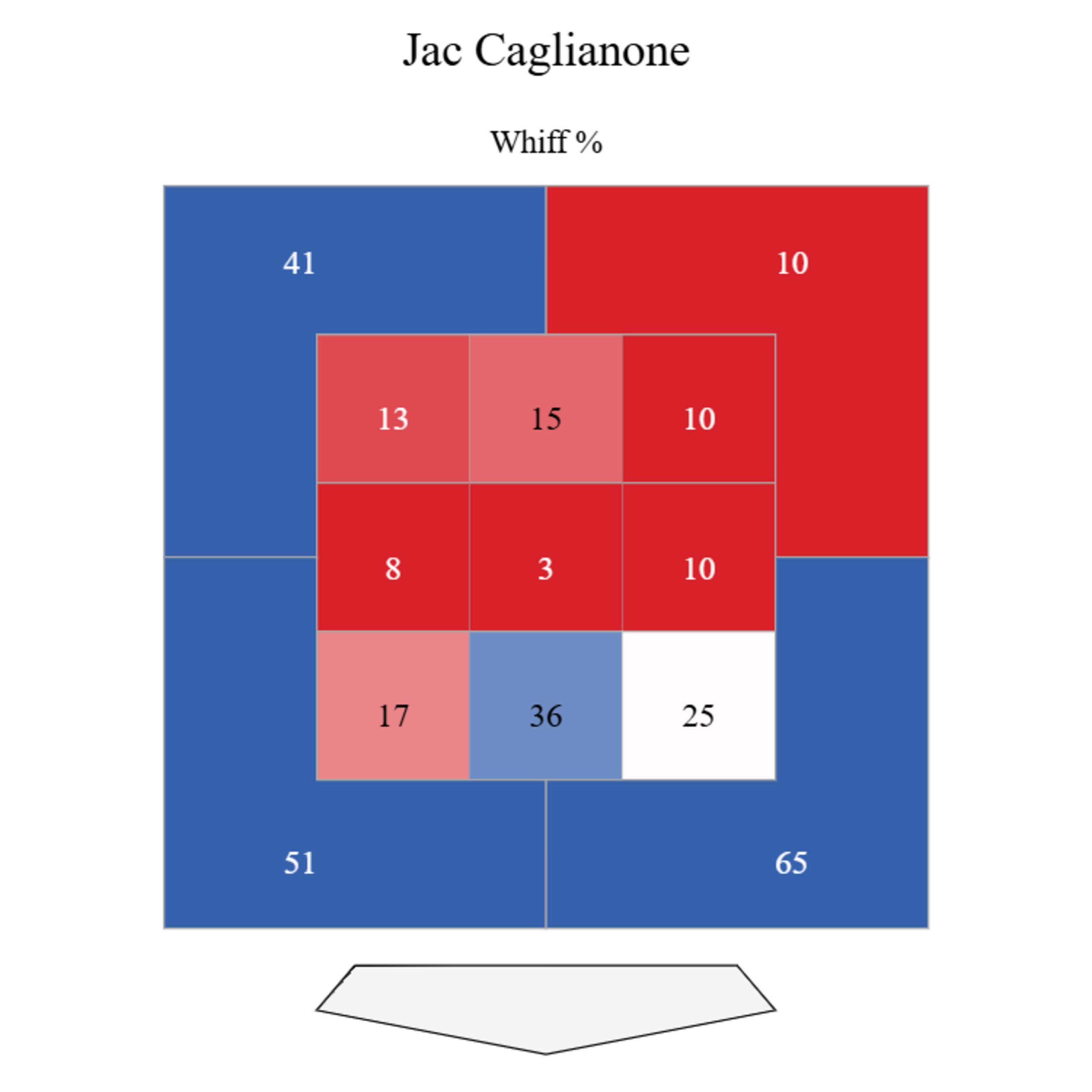
The 10% whiff rate isn’t alarming on up and in pitches. However, his whiff rate is 41% on pitches up and away, 51% on pitches low and away, and 65% on pitches low and in. The reality is that he is NOT good when it comes to making contact in those areas, so he needs to learn how to lay off those pitches in the waste zone better if he’s going to improve as a hitter next season.
On pitches inside the zone, his whiff rate isn’t as detrimental (except zones 8 and 9, which are 36% and 25%, respectively). Thus, he can still be aggressive, which was his calling card as a hitter with the Gators.
He needs to minimize the chasing and maximize the aggressiveness on pitches inside the strike zone. His 67.5% zone-swing rate is 0.5% higher than the league average, but improving that number in 2026 will show that he’s improved his pitch recognition in the offseason.
As Picollo mentioned in his press conference, better pitch selection will be the key to Caglianone fully tapping into his power and upside at the plate with the Royals in 2026 and beyond.
More must-reads:
- Yankees ride rookie Cam Schlittler's historic performance to ALDS with Red Sox elimination
- Dodgers announce Game 1 starter vs. Phillies
- The 'MLB playoffs all-time hit leaders' quiz
Breaking News
Trending News
Customize Your Newsletter
 +
+
Get the latest news and rumors, customized to your favorite sports and teams. Emailed daily. Always free!


